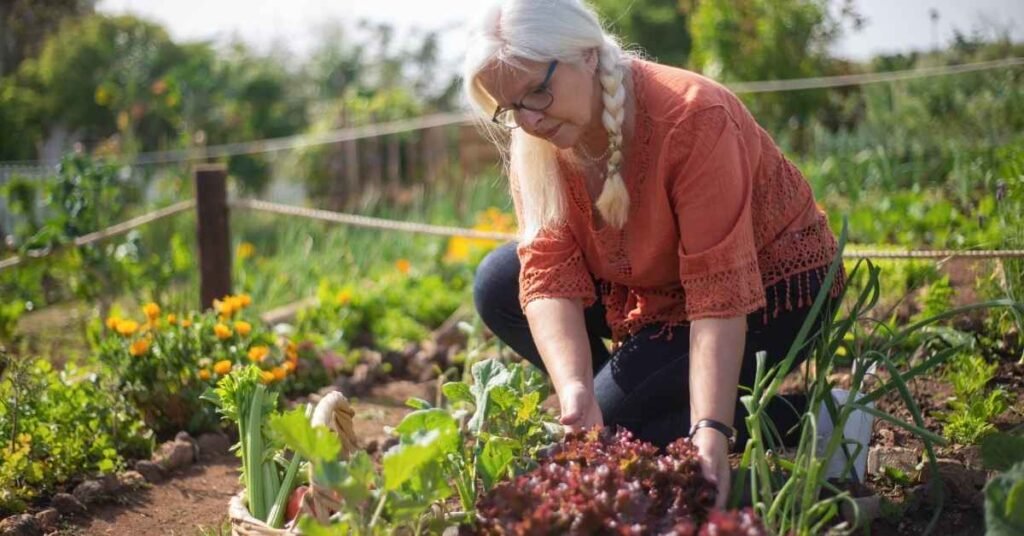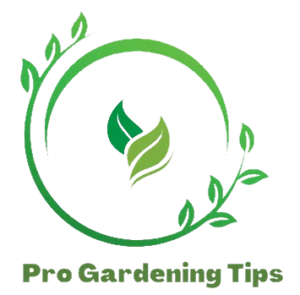Backyard Garden Sustainability: Eco-Friendly Practices
Table of Contents
Introduction: Why Sustainable Gardening Matters
Sustainable gardening is crucial for creating environmentally friendly outdoor spaces that benefit both our planet and our well-being. As we face growing concerns about climate change, resource depletion, and habitat loss, adopting sustainable gardening practices helps address these issues by promoting ecological balance. Sustainable gardening involves techniques such as conserving water, using organic fertilizers, and supporting local wildlife, which collectively reduce our environmental footprint. This approach not only helps preserve natural resources but also fosters healthier soil and plant life, leading to more resilient and productive gardens.

By prioritizing sustainability, gardeners contribute to a greener future, enhance biodiversity, and create spaces that are both beautiful and eco-conscious. Embracing these practices ensures that our gardens can thrive while positively impacting the environment, making sustainable gardening a vital choice for responsible stewardship of our natural world.
Water Conservation Techniques for Your Garden
Water conservation is essential for maintaining a healthy garden while minimizing environmental impact. Implementing effective techniques can help ensure that water is used efficiently and that your garden remains vibrant and sustainable.
Using Mulch to Retain Moisture
Mulching is a simple yet powerful method to conserve soil moisture. By applying a layer of organic material such as wood chips, straw, or compost around your plants, you create a protective barrier that reduces evaporation. Mulch helps maintain consistent soil temperature, suppresses weeds that compete for water, and improves soil structure as it breaks down. This not only conserves moisture but also enriches the soil with essential nutrients, promoting better plant health. For best results, apply mulch to a depth of 2-4 inches, ensuring it is spread evenly around the base of plants, keeping it away from plant stems to prevent rot.
Installing Rain Barrels and Drip Irrigation
Rain barrels are an excellent way to capture and utilize rainwater, which can then be used to irrigate your garden. Position barrels under downspouts to collect runoff from your roof, and use the stored water to water plants during dry periods. Rain barrels reduce reliance on tap water and lower your water bill while making use of a natural resource.
Drip irrigation is another efficient watering technique. Unlike traditional sprinklers that waste water through evaporation and runoff, drip irrigation delivers water directly to the plant roots through a network of tubing and emitters. This method ensures precise water application, reduces waste, and can be easily adjusted to fit different plant needs. Installing a drip system with a timer can further optimize water use by providing consistent, targeted watering that matches your garden’s requirements.
By using mulch, rain barrels, and drip irrigation, you can significantly enhance your garden’s water conservation efforts, contributing to a more sustainable and resilient outdoor space.
Reducing Waste Through Composting and Recycling
Reducing waste through composting and recycling not only benefits the environment but also enriches your garden. By integrating these practices, you can minimize landfill contributions and create a more sustainable gardening routine.
Starting a Compost Pile
Composting is an effective way to recycle organic waste from your garden and kitchen. Begin by selecting a suitable location for your compost pile, such as a well-drained area in your yard or a compost bin. Add a mix of green materials (nitrogen-rich items like vegetable scraps, coffee grounds, and grass clippings) and brown materials (carbon-rich items like dry leaves, straw, and cardboard). Aim for a balanced ratio of these materials to facilitate decomposition. Ensure proper aeration by turning the pile regularly, which helps speed up the composting process and prevents unpleasant odors. Over time, the pile will transform into nutrient-rich compost that can be used to improve soil fertility, enhance plant growth, and reduce the need for chemical fertilizers.
Upcycling Garden Materials
Upcycling involves repurposing materials to extend their life and reduce waste. In the garden, this can mean creatively reusing items that might otherwise be discarded. For example, old wooden pallets can be transformed into raised garden beds or compost bins. Glass jars and plastic containers can serve as planters or seed starters. Additionally, broken pots can be used as drainage shards in the bottom of new pots or incorporated into garden mosaics. By upcycling, you not only reduce waste but also add unique, personalized touches to your garden. This approach encourages resourcefulness and creativity, making your garden more sustainable and visually interesting.
By starting a compost pile and upcycling garden materials, you reduce waste, enhance soil health, and create a more eco-friendly gardening environment. These practices help close the loop in your garden’s ecosystem, promoting sustainability and reducing your ecological footprint.
Choosing Sustainable Plants and Materials
Choosing sustainable plants and materials is key to creating an eco-friendly garden that thrives while minimizing environmental impact. By focusing on native and drought-tolerant species and using eco-friendly garden supplies, you contribute to a more sustainable and resilient outdoor space.
Selecting Native and Drought-Tolerant Species
Native plants are adapted to your local climate, soil, and conditions, making them more resilient and easier to maintain than non-native species. They support local wildlife, such as pollinators and birds, and require fewer resources like water and fertilizers. By selecting native plants, you reduce the need for chemical inputs and create a habitat that fosters biodiversity. Additionally, drought-tolerant plants are designed to withstand dry conditions with minimal water. These plants typically have deep root systems and water-saving adaptations and are well-suited for periods of low rainfall. Incorporating these species into your garden not only conserves water but also ensures that your garden remains vibrant and healthy even during dry spells.

Using Eco-Friendly Garden Supplies
The choice of garden supplies can significantly impact the sustainability of your gardening practices. Opt for eco-friendly materials such as biodegradable pots, compostable mulch, and organic fertilizers. Avoid products that contain harmful chemicals or non-renewable resources. For example, choose natural pest control methods like neem oil or insecticidal soap instead of synthetic pesticides. Use recycled or upcycled materials for garden structures, such as reclaimed wood for raised beds or repurposed bricks for pathways. Additionally, consider using sustainable irrigation solutions like rain barrels and drip irrigation systems to reduce water waste.
By selecting native and drought-tolerant plants and using eco-friendly garden supplies, you build a garden that is both beautiful and sustainable. These choices not only reduce environmental impact but also create a thriving ecosystem that supports local wildlife and conserves natural resources.
Encouraging Wildlife and Biodiversity
Encouraging wildlife and biodiversity in your garden is essential for fostering a thriving ecosystem and supporting local wildlife. By creating habitats for pollinators and planting for year-round interest, you can transform your garden into a vibrant sanctuary for various species.
Creating Habitats for Pollinators
Pollinators such as bees, butterflies, and hummingbirds play a crucial role in plant reproduction and ecosystem health. To attract and support these beneficial insects and birds, create habitats that offer food, water, and shelter. Plant a diverse range of flowering plants that provide nectar and pollen throughout the growing season. Opt for native species, as they are best suited to local pollinators and often require less maintenance. Incorporate a mix of plant types, including perennials, annuals, and shrubs, to ensure a continuous supply of resources. Adding features like bee hotels, butterfly houses, and shallow water sources can further support these creatures. Providing these elements encourages pollinators to visit and thrive in your garden, enhancing its biodiversity and productivity.
Planting for Year-Round Interest
A garden that offers visual and ecological interest throughout the year supports a wide range of wildlife and provides constant enjoyment. To achieve this, choose a variety of plants that bloom in different seasons and include evergreens and deciduous shrubs for structure and texture. Early-blooming flowers like crocuses and hellebores provide food for pollinators in spring, while summer-blooming plants like coneflowers and lavender offer continued nourishment. Autumnal additions like asters and sedums provide late-season resources, and winter interest can be created with ornamental grasses, berry-bearing shrubs, and evergreen plants.
By ensuring that your garden has plants with staggered bloom times and varied forms, you create a dynamic environment that attracts diverse wildlife and offers beauty throughout the year. By creating habitats for pollinators and planting with year-round interest in mind, you foster a rich, biodiverse garden that supports and celebrates local wildlife while enhancing your outdoor space.
Conclusion: Creating a Sustainable Backyard Garden
Creating a sustainable backyard garden involves thoughtful planning and a commitment to eco-friendly practices that benefit both the environment and your enjoyment of the space. By selecting native and drought-tolerant plants, implementing water conservation techniques, and choosing sustainable materials, you build a garden that thrives with minimal impact. Encouraging wildlife through habitat creation and ensuring year-round interest with diverse plantings further enriches your garden’s ecosystem.
These efforts not only enhance biodiversity and support local wildlife but also create a beautiful, resilient garden that reflects your dedication to sustainability. Embracing these principles leads to a harmonious outdoor space that conserves resources, reduces waste, and provides a haven for nature. Ultimately, a sustainable backyard garden is a rewarding investment in both the health of the planet and the enjoyment of your personal green retreat.
